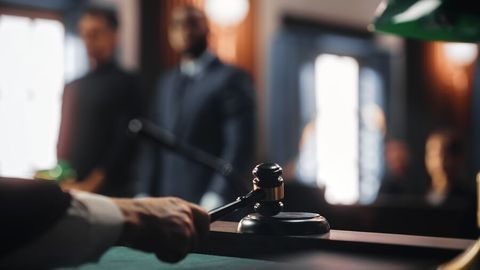Implicit Motivation To Combine Sufficient To Show Obviousness
Client Alert | 1 min read | 10.25.06
In Dystar v. Patrick Co., (No. 06-1088; October 3, 2006), a Federal Circuit panel reverses a district court's denial of the accused infringer's motion for judgment as a matter of law (JMOL) that the patent in suit was invalid based on obviousness. Importantly, with respect to the claimed "process for dyeing textile materials with catalytically hydrogenated leuco indigo," the Federal Circuit determines that substantial evidence does not support a finding that a person of ordinary skill would be a dyer lacking chemistry knowledge, as opposed to a dyeing-process designer having such knowledge. Accordingly, the jury's apparent decision to disregard certain prior art references (based on an incorrect determination of the level of ordinary skill in the art) was unsupported by substantial evidence.
The panel then explores the caselaw addressing obviousness and notes that “obviousness is a complicated subject requiring sophisticated analysis.” In particular, the court points out that an explicit suggestion to combine in the references is not required. Rather, an implicit motivation to combine may be sufficient, even where there is no "hint of suggestion in the references themselves." Based on well-established law, "common knowledge and common sense" can be sufficient to establish a motivation to combine. Moreover, a suggestion to combine may be "gleaned" from the fact that a combination of references is "desirable" because, for example, it is "stronger, cheaper, cleaner, faster, lighter, smaller, more durable, or more efficient." Here, the court recognizes that the patent at issue claimed a new, more efficient way of performing a known function, but nevertheless concludes that the asserted innovation is merely “exploitation” of the well-known principle of vacuum packaging. This is the work of a skilled chemist, and not an inventor, says the Court. As a result, the Court finds the claims invalid as obvious over a combination of references.
Insights
Client Alert | 6 min read | 11.26.25
From ‘Second’ to ‘First:’ Federal Circuit Tackles Obvious Claim Errors
Patent claims must be clear and definite, as they set the boundaries of the patentee’s rights. Occasionally, however, claim language contains errors, such as typographical mistakes or incorrect numbering. Courts possess very limited authority to correct such errors. The United States Court of Appeals for the Federal Circuit has emphasized that judicial correction is appropriate only in rare circumstances, where (1) the error is evident from the face of the patent, and (2) the proposed correction is the sole reasonable interpretation in view of the claim language, specification, and prosecution history. See Group One, Ltd. v. Hallmark Cards, Inc., 407 F.3d 1297, 1303 (Fed. Cir. 2005) and Novo Indus., L.P. v. Micro Molds Corp., 350 F.3d 1348, 1357 (Fed. Cir. 2003).
Client Alert | 5 min read | 11.26.25
Client Alert | 6 min read | 11.25.25
Brussels Court Clarifies the EU’s SPC Manufacturing Waiver Regulation Rules
Client Alert | 3 min read | 11.24.25


